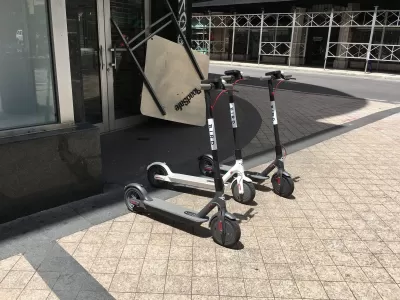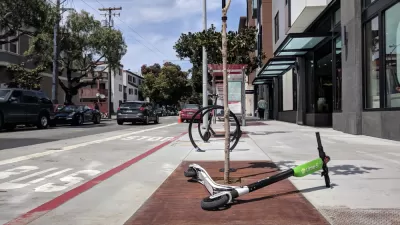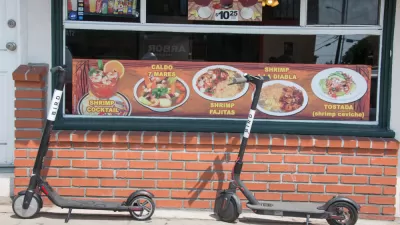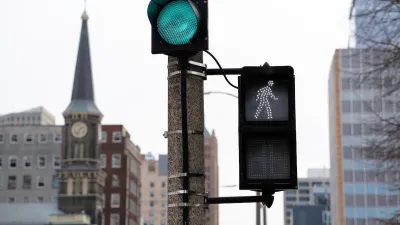Years after cities first started trying to regulate electric scooters with geofences and designated parking areas, Bird will begin automatically lowering scooter speeds in pedestrian-dense areas like school zones and hospitals.

As Shannon Connellan reports, Bird is instituting "Community Safety Zones, geofenced areas of high-pedestrian activity clearly marked in the app's map" where "your maximum speed will be automatically reduced to 8 miles per hour." This "much-needed move" will first apply in busy areas such as schools and hospitals "in Miami, Marseille, and Madrid first, then expanding to the other 250 cities where Bird is available." The change follows "the long-studied dangers of riding e-scooters for riders and pedestrians — e-scooter related injuries are no joke, and that significantly goes for pedestrians. Bird's e-scooters' top speeds range from 16 miles (25 kilometres) per hour for the Bird Air to 18 miles (28 kilometres) per hour for the Bird One."
This is "the latest safety push from Bird, with the company recently making it harder to scoot under the influence with its 'Safe Start' feature. Launched in July, the feature makes users wanting to access scooters in late-night hours have to pass a keyword typing test to avoid scooting after drinking."
Years after Bird disrupted the shared mobility industry with "dockless" scooters that skirted city regulations, Jenn Fox of the Vision Zero Network, a worldwide road traffic safety campaign, says "Bird’s Safe Start and Community Safety Zones are an example of technology initiatives that can support safe systems, respond to community concerns and solve mobility challenges at the same time."
FULL STORY: Bird will slow your e-scooter down in high-pedestrian areas like schools

Trump Administration Could Effectively End Housing Voucher Program
Federal officials are eyeing major cuts to the Section 8 program that helps millions of low-income households pay rent.

Planetizen Federal Action Tracker
A weekly monitor of how Trump’s orders and actions are impacting planners and planning in America.

Ken Jennings Launches Transit Web Series
The Jeopardy champ wants you to ride public transit.

Rebuilding Smarter: How LA County Is Guiding Fire-Ravaged Communities Toward Resilience
Los Angeles County is leading a coordinated effort to help fire-impacted communities rebuild with resilience by providing recovery resources, promoting fire-wise design, and aligning reconstruction with broader sustainability and climate goals.

When Borders Blur: Regional Collaboration in Action
As regional challenges outgrow city boundaries, “When Borders Blur” explores how cross-jurisdictional collaboration can drive smarter, more resilient urban planning, sharing real-world lessons from thriving partnerships across North America.

Philadelphia Is Expanding its Network of Roundabouts
Roundabouts are widely shown to decrease traffic speed, reduce congestion, and improve efficiency.
Urban Design for Planners 1: Software Tools
This six-course series explores essential urban design concepts using open source software and equips planners with the tools they need to participate fully in the urban design process.
Planning for Universal Design
Learn the tools for implementing Universal Design in planning regulations.
Ada County Highway District
Clanton & Associates, Inc.
Jessamine County Fiscal Court
Institute for Housing and Urban Development Studies (IHS)
City of Grandview
Harvard GSD Executive Education
Toledo-Lucas County Plan Commissions
Salt Lake City
NYU Wagner Graduate School of Public Service





























